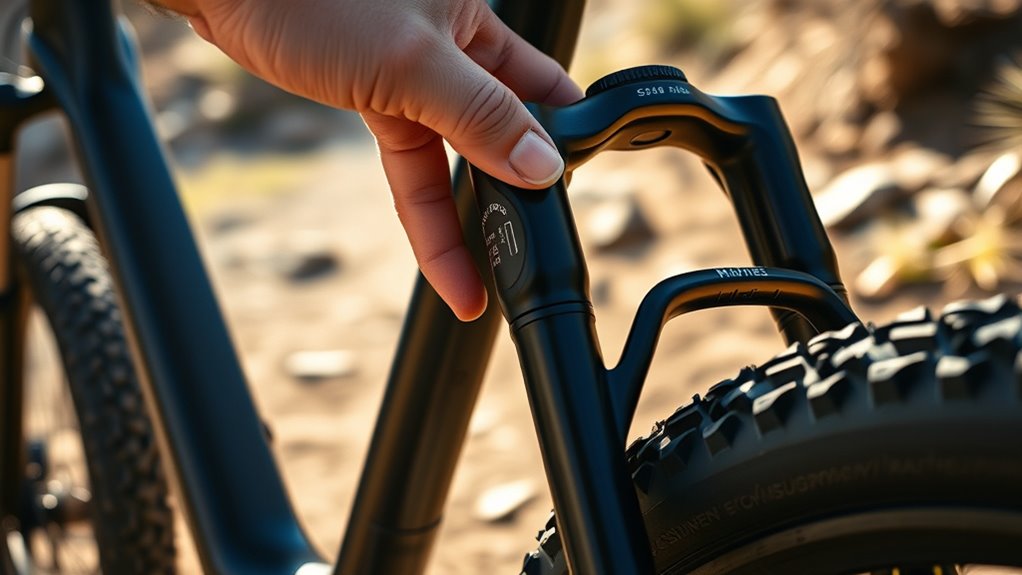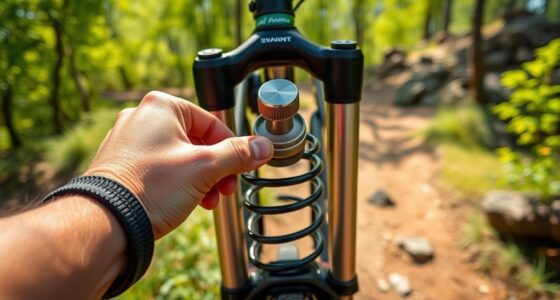To set the sag on your full-suspension e-MTB, start by measuring your rider weight accurately. Then, lightly sit on the bike with your gear and mark the suspension’s initial position before compressing it. Adjust the preload on your shock so that about 20-30% of total suspension travel is compressed under your weight. Test ride and fine-tune the settings, ensuring your suspension responds well on varied terrain. Continuing will help you perfect your setup for the best ride experience.
Key Takeaways
- Measure rider weight accurately and determine initial sag target based on riding style and bike specifications.
- Inflate or deflate the shock and fork to reach the recommended starting pressure for your weight.
- Adjust spring preload to achieve the desired sag, typically 20-30% of total suspension travel.
- Use a shock pump to fine-tune pressure, then sit on the bike and check sag with the rider in riding position.
- Test ride on varied terrain and make incremental adjustments to compression and rebound for optimal performance.
Understanding the Importance of Sag for E-MTBs
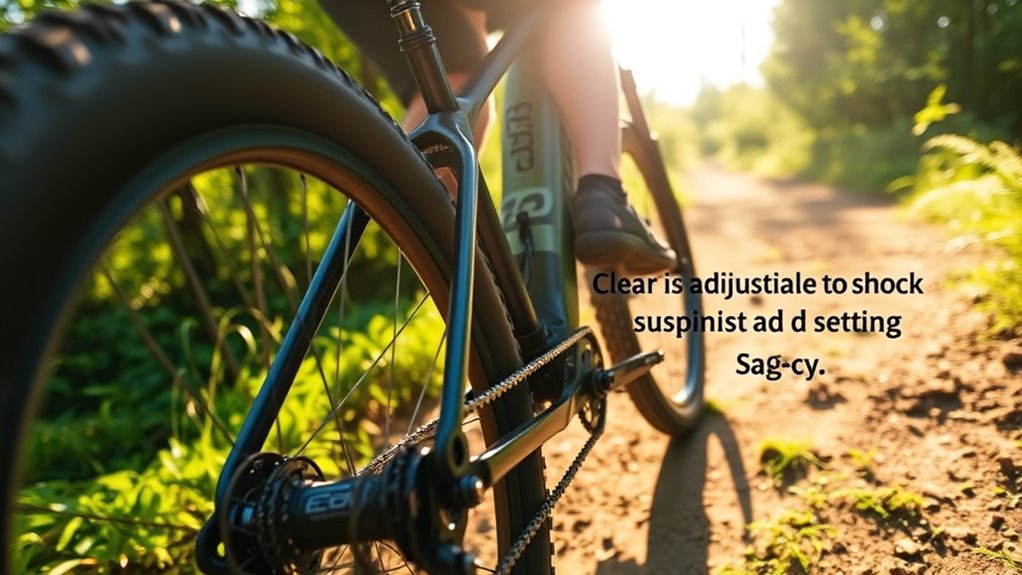
Understanding the importance of sag for E-MTBs is essential because it directly affects how your bike handles and absorbs shocks. Proper sag setting ensures the suspension maintains ideal contact with the trail, which is critical for suspension geometry. When sag is too high or low, it can alter your bike’s handling, making turns less precise or reducing shock absorption. Additionally, sag influences battery management; a well-set suspension minimizes energy wastage by improving efficiency, helping your motor use less power on rough terrain. This balance enhances ride comfort and extends your battery life. Asset division considerations also play a role in understanding how different components and systems interact to optimize performance, especially when considering the overall bike setup for the best riding experience. Accurate sag adjustment is vital for achieving the optimal riding position, which can significantly improve control and comfort during your rides. By understanding how sag impacts both suspension geometry and battery efficiency, you can fine-tune your setup for a smoother, more controlled ride across diverse trails, ensuring optimal ride quality and component longevity.
Preparing Your Bike and Necessary Tools
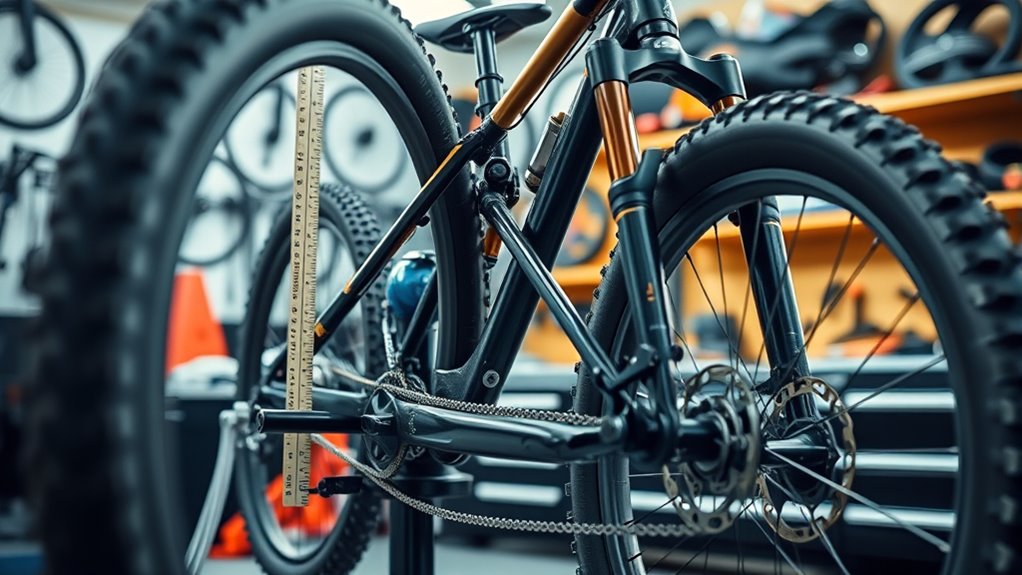
Before you can accurately set the sag on your full-suspension E-MTB, it is vital to properly prepare your bike and gather the right tools. Start by checking your tire pressure; correct inflation guarantees consistent suspension performance. Adjust your tires to the recommended pressure for your riding style and terrain. Next, inspect your brake setup—make sure your brakes are properly bled and functioning smoothly, as improper brake adjustments can interfere with sag measurement. Remove any accessories or gear that could affect your weight distribution, and ensure your suspension is clean and free of debris. Having a reliable shock pump, a torque wrench, and a tape measure or ruler nearby will make the process smoother. Proper preparation guarantees accurate sag measurements and prime suspension performance.
Measuring Your Rider’s Weight and Setting Your Initial Sag
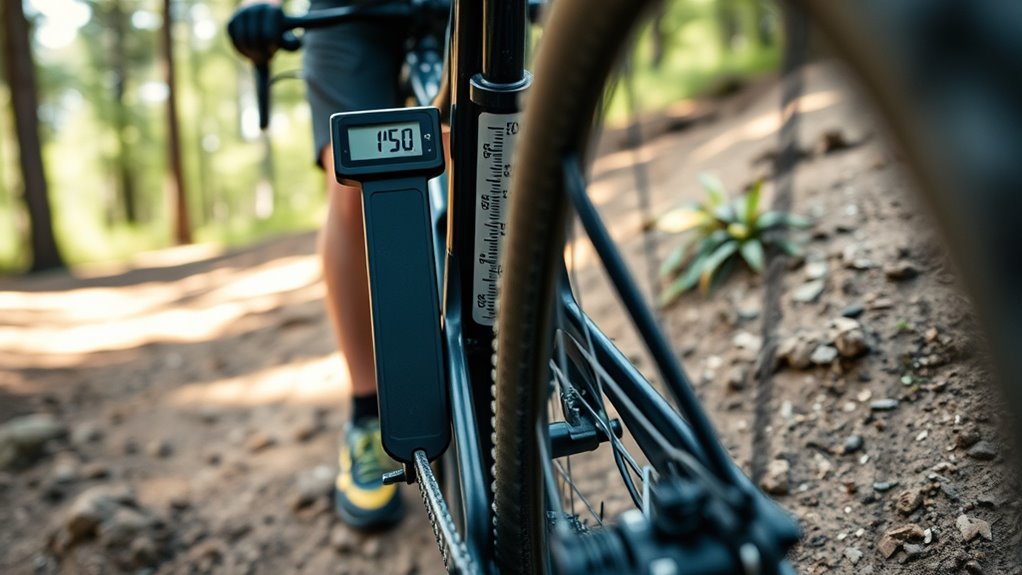
With your bike prepped and tools ready, the next step is to accurately measure your rider’s weight and set your initial sag. Proper suspension calibration starts here, as knowing rider weight is essential for correct sag setting. Use a reliable scale to perform rider weight measurement, ensuring accuracy. Once you have this data, you can determine the ideal initial sag based on your riding style and bike specifications. Inflating or deflating the shock or fork accordingly will help you achieve a starting point for suspension performance. Remember, setting the initial sag correctly isn’t about fine-tuning; it’s about establishing a solid baseline. Suspension tuning is a critical part of optimizing your full-suspension E-MTB’s performance, ensuring it responds predictably and performs at its best during rides.
Adjusting Your Suspension to Achieve the Correct Sag
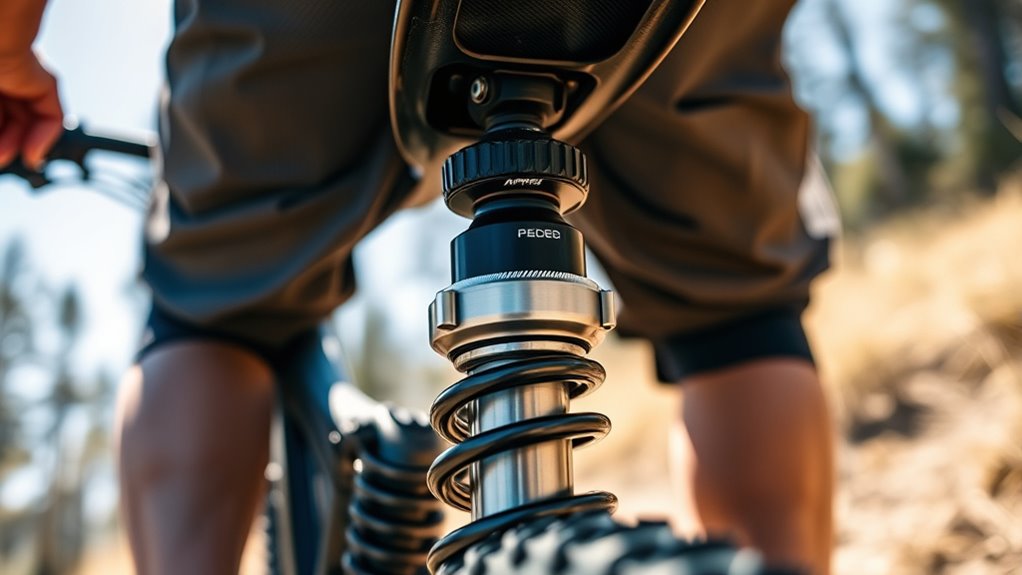
To achieve the correct sag, you need to adjust your suspension components until the bike compresses to the predetermined baseline when you sit on it. Proper suspension maintenance guarantees ideal performance and comfort. Your rider technique also influences sag; whether you sit forward or back affects how much the suspension compresses. Use the following table to guide your adjustments:
| Adjustment Method | Effect on Sag |
|---|---|
| Increase spring preload | Reduces sag, stiffens suspension |
| Decrease spring preload | Increases sag, softens suspension |
| Adjust compression damping | Fine-tunes responsiveness |
Check sag after each adjustment, and always test on varied terrain to ensure your setup matches riding style. This process helps you achieve a balanced ride and prolongs suspension life. Additionally, understanding the contrast ratio of your suspension setup can help you optimize performance in different lighting and terrain conditions. Regularly inspecting your suspension components ensures they operate effectively and maintain proper sag settings over time. Incorporating essential oils such as lavender or eucalyptus during maintenance can also promote better lubrication and reduce wear on moving parts. Keep in mind that rider weight plays a crucial role in setting the correct sag, so consider this factor when making adjustments.
Testing and Fine-Tuning for Optimal Performance
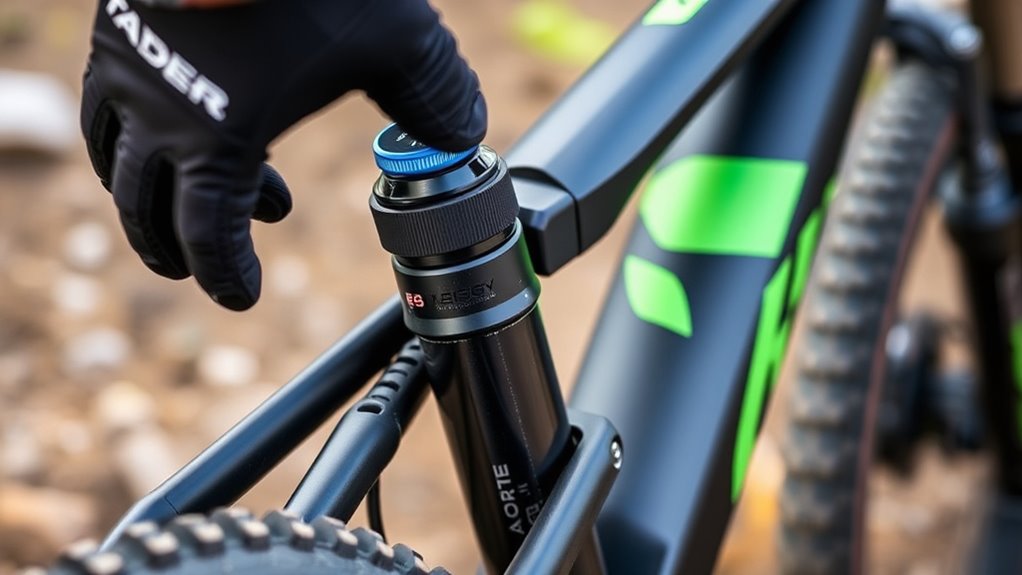
Once you’ve adjusted your suspension to the proper sag, the next essential step is to test and fine-tune it during actual riding conditions. Focus on shock calibration and fork compression to enhance performance. To do this effectively:
- Ride on varied terrain to gauge how your bike absorbs shocks and maintains traction.
- Adjust fork compression settings if the front feels too harsh or soft.
- Fine-tune shock calibration by changing rebound or compression to suit your riding style.
- Pay attention to any bottom-outs or excessive bobbing, then re-evaluate sag and make necessary adjustments.
- Consider the impact of automation technologies on your bike’s electronic components to ensure optimal suspension performance.
This process helps you identify if your suspension is responsive and comfortable, ensuring excellent performance tailored to your riding style and terrain.
Conclusion
Now that you’ve got your sag dialed in, your e-MTB will feel as responsive as a finely tuned instrument. Think of suspension setup like a dancer finding perfect balance—you’ll enjoy smoother rides and better control on every trail. Remember, a little fine-tuning goes a long way, so keep testing and adjusting until your bike feels just right. With patience and practice, you’ll master your suspension, making every ride more enjoyable and confident.
